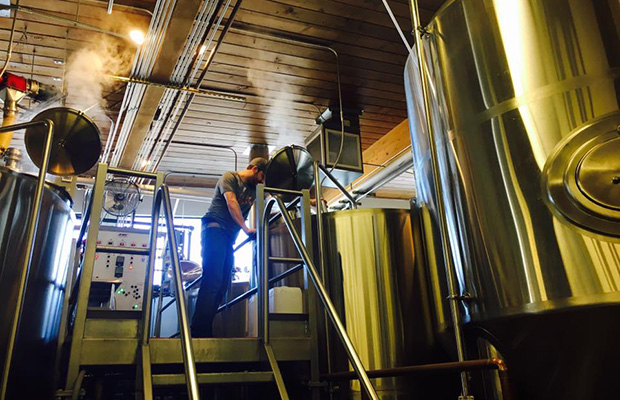
If your brewery’s production is moving up, the time to start thinking of a malt silo for your base malt is now.
It’s very rare to hear of a brewery that doesn’t look at this option when it nears the 4,000 barrels-per-year production mark. A few times that silos aren’t discussed is because space is limited near the brewhouse, the property is not owned by the brewery owner or the discussion of moving to a larger facility is in the works.
Otherwise, a huge savings is key to helping cut raw material costs.
For Jeremiah Johnson, adding a silo was a very early task when switching the former The Front Brewing in Great Falls, Montana to Johnson’s namesake. Along with plenty of room for bagged specialty malts, storage hasn’t been a problem.
”For specialty malts, we have investigated various providers to obtain the best cost/quality combination,” Johnson said.
Urban Artifact recent purchased a malt silo. Chief of Brewing Operations, Bret Kollmann Baker said the purchase will save the Cincinnati brewery approximately 35% on its malt bill.
”[It] is an insane amount of savings,” he said.
The brewery will order approximately every two weeks and tries to order exactly how much grain needed to get through those two weeks.
”We eat a little bit on freight this way, but it keeps our inventory low,” Baker said.
The brewery has started leasing space in an off-site warehouse across the street from the facility and also invested in lots of pallet racking.
In Columbus, Ohio, Seventh Son installed a dry malt silo and orders around 50,000 pounds every five weeks or so while specialty malt is generally ordered weekly as needed.
“I keep a spreadsheet to track silo depletion and try to time delivery to when there are only a couple thousand pounds left in there,” the brewery’s Collin Castore and Colin Vent said. “We tend to carry a few bags of each specialty in inventory on the off-chance we need to pivot the brew schedule last minute.”
The silo has made everything so much easier, they added. The brewery’s previous small walk-in cooler was removed and the space it occupied now has pallet racks on which specialty malt is organized. The brewers can load a pallet with their specialty malt and forklift it over to the mill.
Switching to a silo with a main base malt has affected recipe formulation too much. Seventh Son found a base malt that sits between a Pilsner and Pale malt in color so that really covered the bases. There’s an occasional special release that’s a Munich base but in that case, they work entirely from bagged malt.
Urban Artifact has built its base recipes with the inevitable idea that it would get a silo one day, so changes were not needed.
Photo courtesy Jeremiah Johnson Brewing Co.




Be the first to comment